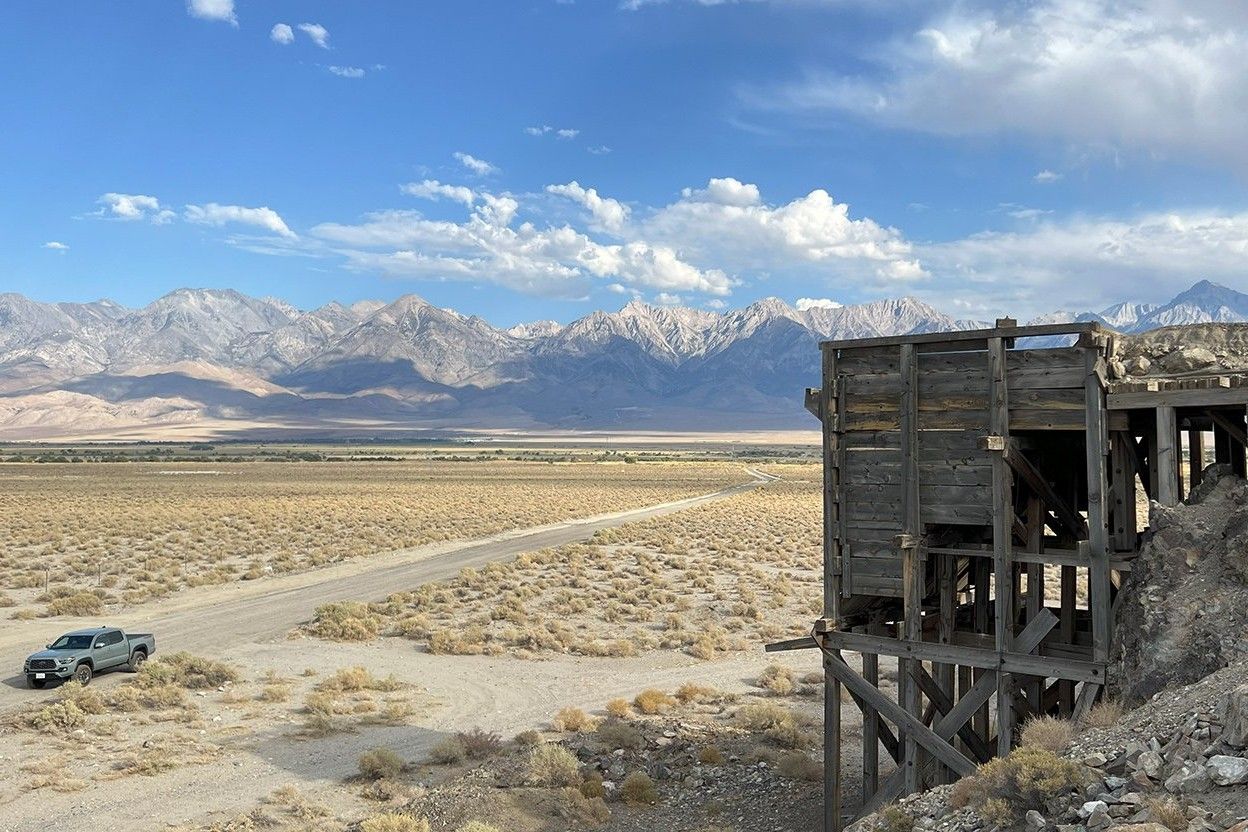Secrets Of California’s Abandoned Mining Railways

Have you ever wondered what lies hidden in the mountains of California? California's abandoned mining railways hold secrets of a bygone era. These railways once bustled with activity, transporting precious minerals from deep within the earth. Now, they stand silent, overgrown with vegetation, and filled with stories waiting to be told. Imagine walking along these forgotten tracks, feeling the history beneath your feet. Whether you're a history buff, an adventure seeker, or just curious, exploring these railways offers a unique glimpse into the past. Ready to step back in time and uncover the mysteries of California's mining history?
California's Forgotten Railways
California's abandoned mining railways hold stories of the past, hidden in the rugged landscapes. These railways once transported precious minerals, now they lie silent, waiting for adventurers to uncover their secrets. Let's explore some of the most intriguing abandoned mining railways in California.
1. Bodie Railway and Lumber Company
Bodie, a ghost town in the Bodie Hills, was once a bustling gold-mining town. The Bodie Railway and Lumber Company played a crucial role in its development.
- History: Established in 1881, this railway transported lumber and firewood to Bodie.
- Current State: The tracks are long gone, but remnants of the railway can still be seen.
- Exploration Tips: Wear sturdy shoes and bring plenty of water. The high desert can be unforgiving.
2. Carson and Colorado Railway
Stretching from Mound House, Nevada, to Keeler, California, the Carson and Colorado Railway served the mining industry in the late 19th century.
- History: Built in 1880, it was intended to connect mining towns.
- Current State: Some sections of the railway are preserved, while others are overgrown.
- Exploration Tips: Check out the Eastern California Museum in Independence for more history.
3. Death Valley Railroad
Death Valley Railroad, built to serve the borax mines, offers a glimpse into the harsh conditions miners faced.
- History: Operated from 1914 to 1928, transporting borax from the mines.
- Current State: Only a few tracks and structures remain.
- Exploration Tips: Visit the Death Valley National Park Visitor Center for maps and information.
4. Nevada County Narrow Gauge Railroad
This narrow-gauge railway connected Nevada City and Grass Valley to the Central Pacific Railroad.
- History: Opened in 1876, it was vital for transporting gold and supplies.
- Current State: The tracks are gone, but the Nevada County Narrow Gauge Railroad Museum preserves its legacy.
- Exploration Tips: The museum offers guided tours and exhibits.
5. Quincy Railroad
Quincy Railroad, a short-line railway, served the logging and mining industries in Plumas County.
- History: Established in 1905, it connected Quincy to the Western Pacific Railroad.
- Current State: Some tracks are still in use, but many sections are abandoned.
- Exploration Tips: Visit the Plumas County Museum for more information on the railway's history.
6. Sierra Railway
The Sierra Railway, now known as the Sierra Railroad, played a significant role in California's mining history.
- History: Founded in 1897, it transported gold and other minerals.
- Current State: Some sections are still operational, while others are abandoned.
- Exploration Tips: The Railtown 1897 State Historic Park offers train rides and exhibits.
7. Southern Pacific Narrow Gauge
This narrow-gauge railway, also known as the "Slim Princess," served the Owens Valley.
- History: Operated from 1883 to 1960, transporting minerals and supplies.
- Current State: Some tracks and structures remain, particularly in Laws, California.
- Exploration Tips: Visit the Laws Railroad Museum for a deeper dive into its history.
8. Tonopah and Tidewater Railroad
Connecting Ludlow, California, to Goldfield, Nevada, the Tonopah and Tidewater Railroad was crucial for the mining industry.
- History: Built in 1905, it transported gold, silver, and borax.
- Current State: Mostly abandoned, with some remnants visible in the desert.
- Exploration Tips: Bring a map and GPS, as the desert can be disorienting.
9. Virginia and Truckee Railroad
Though primarily in Nevada, the Virginia and Truckee Railroad extended into California, serving the Comstock Lode.
- History: Established in 1869, it was one of the most famous short-line railroads.
- Current State: Partially restored, with some sections offering tourist rides.
- Exploration Tips: Check out the Virginia and Truckee Railroad Museum for more details.
10. West Side Lumber Company Railway
This railway served the logging industry in Tuolumne County, transporting lumber to the mills.
- History: Operated from 1898 to 1961, it was the last narrow-gauge logging railway in the West.
- Current State: Some tracks and equipment remain, particularly in the Stanislaus National Forest.
- Exploration Tips: Visit the Tuolumne County Museum for more information on the railway's history.
Hidden Gems of History
California's abandoned mining railways offer a unique glimpse into the past. These forgotten tracks tell stories of gold rush dreams, hard labor, and the rise and fall of entire communities. Exploring these sites, you can almost hear the echoes of steam engines and miners' shouts.
Visiting these railways isn't just about history. It's also about adventure. Hiking through rugged landscapes, discovering old tunnels, and seeing nature reclaim what was once bustling with activity. Each railway has its own charm and mystery, waiting for you to uncover.
So next time you're in California, take a detour from the usual tourist spots. Dive into the hidden gems of history. You'll find more than just old tracks; you'll find a connection to a time that shaped the state. Happy exploring!

